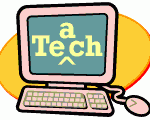 There is convergence of ideas about teaching and technology around the Law School lately. The Law School is holding idea sessions as part of our strategic planning process. A significant part of the discussion involves teaching: effectiveness, learners, full and part-time education. Earlier this week Douglas Fisher published an article in the Chronicle of Higher Education on “flipping” his database course at Vanderbilt. Flipping a course refers to taking the in-class lecture component and moving it to an online component, usually accomplished by recording the lecture. Earlier this summer I attended a presentation by Professor Norman Garland (Southwestern School of Law) who flipped his Evidence course and reported on the process and results. These threads all come together this week for me.
There is convergence of ideas about teaching and technology around the Law School lately. The Law School is holding idea sessions as part of our strategic planning process. A significant part of the discussion involves teaching: effectiveness, learners, full and part-time education. Earlier this week Douglas Fisher published an article in the Chronicle of Higher Education on “flipping” his database course at Vanderbilt. Flipping a course refers to taking the in-class lecture component and moving it to an online component, usually accomplished by recording the lecture. Earlier this summer I attended a presentation by Professor Norman Garland (Southwestern School of Law) who flipped his Evidence course and reported on the process and results. These threads all come together this week for me.
We haven’t flipped any classes here but we have blended (a term Garland prefers to flipping) a few. Some MULS faculty have been long time adopters of technology both in the classroom and outside. Many have electronic course pages, electronic supplements, electronic casebooks, and even video webcasts of course supplements. Several faculty here have blended some of their traditional in-class instruction with required out-of-class viewing of lectures. The MULS faculty who have blended their classes use the out-of-class lecture to establish the basics of the topic, which means in-class instruction can focus less on establishing the topic and more about exploring its nuances and its applications.
Both Garland and Fisher assign quizzes for each of the required recordings. This gives some course grade weight to the out-of-class viewing. Garland reports a significant improvement almost all aspects of his Evidence class since moving his lectures online. He attributes the student’s ability “rewind” complex or difficult to grasp portions of the lectures. With an in-class lecture, the student gets only one shot at capturing the information. During our research and reasoning instruction, we tell students to reread the cases after they have a better understanding of the material and they may read it in a new light. Professor Ruth Ann McKinney’s E.M.P.O.W.E.R. process discussed in Reading Like a Lawyer stresses reviewing and rereading cases. But for the most part we don’t give students the same opportunity with lectures.
The technology infrastructure in Eckstein Hall includes automated class capture which may include a camera shot of the classroom, separate capture of any materials displayed on the classroom projector, and the teacher and student audio capture. On the backend of the technology we are able to control access; public for many of our forums and private for class lectures. A good example of how the technology works is found in the presentation Milwaukee’s Future in the Chicago Megacity. We also have metrics available regarding individual viewers, when they watch, how many times, how much total time spent viewing, and even time spent on each slide. The viewing statistics not only assist taking attendance, but they also deliver very granular information about viewership. A professor may notice a trend of students spending more time or revisiting particular slides. This may indicate that the information on those slides is not clear or may need particular emphasis. Students get the benefit of getting the lecture at their own pace and faculty get benefit of using the recordings for self-evaluation and critique. Both the students and faculty get the benefit of an enhanced in-class experience.
This is an exciting time to be a teacher, student, or technologist at Marquette Law School.

